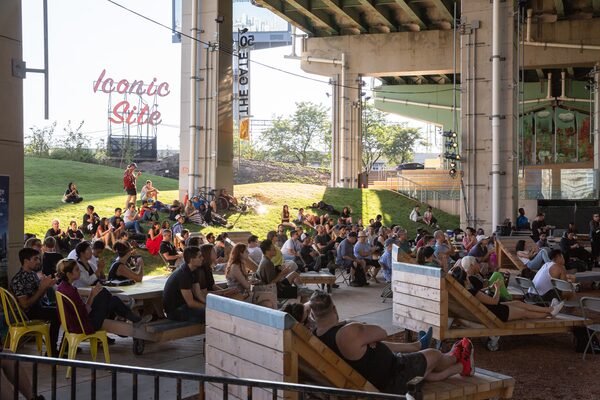
Dubbed the 'hip-hop architect,' Michael Ford wants to show people how the built environment influences behaviour.Hedi Lamar Photography
How do you create a more just city? The architect Michael Ford says the first step is listening to the critiques of those who live there – and the art that they’ve made. And this begins with hip-hop, an art form deeply rooted in North American cities and their public realm. “Hip-hop will be 50 years old next year,” he says. “There is 50 years of unsolicited and unfiltered information about your city out there. It just takes digging to find it.”
On Saturday, Ford will speak and lead a workshop at the Bentway in Toronto, part of a festival and conference called Street Summit that is launching the Bentway’s season of public art and performances. The two-day summit brings together artists, activists, landscape architects and architects for a series of talks and workshops. The challenge: how to create “a more inclusive, equitable and joyful public realm.” It coincides with this weekend’s Doors Open festival of architecture.
The Bentway, a cultural organization that focuses on a space under the Gardiner Expressway, brings together art, politics and planning. Ford will be at home in that mix. He bills himself as “the hip-hop architect,” and in a TEDx talk, he calls hip-hop “modernism’s postoccupancy report.”
Hip-hop culture was born in the apartment buildings of 1970s New York. Ford has worked to connect the spatial and political conditions of those places with the Modernist architecture and planning ideas that shaped them. “Hip-hop is a direct reflection of the environment of the artist,” he says. “We’ve heard these unfiltered critiques of spaces and policies, but no one has taken the time to dissect these stories and say: How do we respond professionally as architects, as urban designers, as engineers?”
That means opening up conversations about planning and building to a wider range of people – and bringing more diversity into the design professions, which in the U.S. and in Canada are overwhelmingly white. “When we talk about creating equitable spaces,” he asks, “how do we get different people to the table, and how do we get community members to use their skills and assets?”
This ties into the larger ambition that the Bentway organization has taken on: contributing to the planning of public spaces all along the Gardiner Expressway. The Bentway Conservancy, a not-for-profit organization, is now collaborating with the City of Toronto on the Under Gardiner Public Realm Plan. That elevated expressway spans 6.5 kilometres in downtown Toronto, in a zone which is rapidly becoming densely populated. The spaces underneath and around it – the public realm – demand systematic thinking.
A key theme is bringing together a diverse set of people and views, says Sam Carter-Shamai, a professional planner who is leading the Bentway’s planning efforts. “There are many people coming from different perspectives, all meant to enjoy this thing we call the public realm,” he says. “We can’t assume that a singular experience is going to be relevant for everybody.”

The Bentway has been hosting summits since 2018.ANDREW WILLIAMSON
The Street Summit will contribute to “broadening that circle,” Carter-Shamai says. “Instead of a report, we want to bring the conversation down to street level and present it in a way that people can easily understand and digest.”
In that respect, the Bentway itself is both a venue and a demonstration of what’s possible. In the past four years, it has transformed from unused land into a hangout for thousands of locals and a significant cultural organization.
Carter-Shamai connects that to the way in which hip-hop culture plays out, literally, in the street. “Before I knew what a planner was, I was running around rapping in back alleys,” he says. “As young people, those were the spaces that were available to us. Then somebody starts tapping out a beat, and all of a sudden you’re not behind the loading dock any more; you’re in the spot. Without changing the place, physically, we made it ours.”
Sign up for The Globe’s arts and lifestyle newsletters for more news, columns and advice in your inbox.
 Alex Bozikovic
Alex Bozikovic